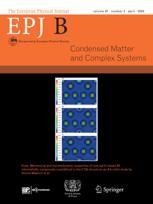Scheduling meetings: Are the odds in your favour?
The results of an exploration of the mathematical theory behind Doodle polls that began in jest may be applicable to many other situations that require consensus-building.
New York | Heidelberg, 14 August 2024
 If you often schedule meetings, you are likely to know how difficult it is to pick a time that suits everyone. Furthermore, the advent of tools like Doodle can make it harder: all too often, a poll will ‘fail’ with no mutually acceptable slot found. It would surely be useful to know the probability that a poll with a given number of participants and slots will generate a suitable time.
If you often schedule meetings, you are likely to know how difficult it is to pick a time that suits everyone. Furthermore, the advent of tools like Doodle can make it harder: all too often, a poll will ‘fail’ with no mutually acceptable slot found. It would surely be useful to know the probability that a poll with a given number of participants and slots will generate a suitable time.
Three US-based theoretical physicists have now generated mathematical models of this problem and published them in EPJ B. “Our study began almost as a joke, when we were irritated by the growing number of polls we had to complete”, says first author Harsh Mathur from Case Western University, Cleveland, OH. “But we found that the models we produced were mathematically sophisticated and could be useful more widely.”
These models use simple variables - the number of slots offered, the number of participants and the fraction of slots when each is available - to generate the probability that at least one viable meeting time will be found. “We found that the number of time slots needed to produce a solution grows exponentially with the number of participants”, explains author Onuttom Narayan of the University of California, Santa Cruz, CA. “And, if you make sensible assumptions about availability during a working week, for example, the probability of finding a time that will suit five or more people will be vanishingly small.”
The physicists also found that if the number of participants is large enough, there will come a point as the fraction of slots that each can attend is increased when the probability of success switches abruptly from near zero to near one. This effect resembles a phase transition in physical chemistry, when (for example) steady heating causes a solid to suddenly melt.
Furthermore, author Katherine Brown of Hamilton College, New York adds, “Any problem that requires stakeholders to reach consensus may benefit from this approach... this might include, for example, a climate conference in which every nation must agree on the final report”.
Reference: Brown, K., Mathur, H. & Narayan, O. Scheduling meetings: are the odds in your favor? Eur. Phys. J. B 97:120 (2024). https://doi.org/10.1140/epjb/s10051-024-00742-z
Further Information
For more information visit: www.epj.org
Services for Journalists
The full-text article is available here.
Contact
Sabine Lehr | Springer | Physics Editorial Department
tel +49-6221-487-8336 | sabine.lehr@springer.com
